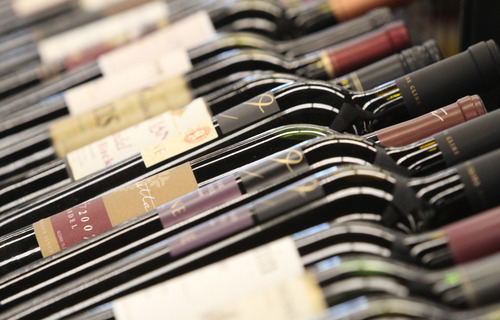This is an archived article that was published on sltrib.com in 2012, and information in the article may be outdated. It is provided only for personal research purposes and may not be reprinted.
Provo • Researchers disagreed Thursday on whether states, like Utah, that control alcohol distribution do better at curbing drunken driving, underage drinking and overconsumption, but they agreed on one sure-fire way to reduce such social ills: boost the price of booze.
At a symposium in Provo on alcohol and its effects sponsored by the Utah County Department of Drug and Alcohol Prevention and Treatment and other agencies, about 100 state lawmakers, municipal officials and law enforcement agents heard about ways to curb alcohol-related ills.
David Jernigan, director of a group funded by the Centers for Disease Control and Prevention, contended that studies reviewed by the CDC show that states with fewer controls have more alcohol outlets, more alcohol advertising and cheaper liquor, all of which lead to increased consumption.
"Alcohol is no ordinary commodity, yet states have been moving toward privatization, which leads to more drinking and driving, violence and other harms," said Jernigan, an associate professor at the Johns Hopkins Bloomberg School of Public Health and director of the Center on Alcohol Marketing and Youth.
"This scares me to death," said Rep. Jack Draxler, R-North Logan, who attended the event. "I was against privatizing alcohol sales, and now I am even more of an opponent."
A consultant hired by lawmakers to study the Utah Department of Alcoholic Beverage Control's business model had suggested a year ago that some form of privatization be considered, including that liquor stores possibly be a separate structure attached to grocery stores.
Some legislators said they were intrigued by such proposals, but they never gained traction.
Countering Jernigan, Philip Cook, a professor of Public Policy and Economics at Duke University, said studies are not conclusive that control states do a better job of moderating alcohol. He said at one time, alcohol was cheaper in control states, although today prices typically are higher in states that have a monopoly over alcohol sales and distribution.
Jernigan and others said research shows that when the price of alcohol goes up by 10 percent, there's a corresponding 2.2 percent decrease in alcohol-related diseases. Yet nationwide, state and federal taxes have not kept pace with inflation, keeping the price of alcohol comparatively low. In some states, such as Maryland, he added, beer is cheaper than milk, juices and soda pop — making liquor an attractive beverage.
"Taxes should be increased on alcohol, and state controls must be maintained and strengthened," he said, adding that he is not offering his opinion on how to lower overconsumption but "these are what the data show."
Utah is among 17 control states, but is one of only four to manage all aspects of alcohol distribution and retail sales. In Utah, all alcohol— with the exception of 3.2 beer — is sold in state liquor outlets.
Consultant Pamela Erickson said alcoholism increased during the five decades of deregulation in the United Kingdom. During that time, consumption by the entire population more than doubled. By the 2000s, she said, social problems became acute, with high rates of underage drinking and children as young as 8 suffering from alcohol poisoning.
In February, Prime Minister David Cameron called for health education, a ban on cheap alcohol and government regulations to lower outlet density.
"The U.S. is on a similar path as the U.K. with affordability, accessibility and marketing of alcohol on the increase," said Erickson, who directed the Oregon Liquor Control Commission from 1996 to 2003. "These trends are worrisome because research shows they typically increase consumption, particularly among price-sensitive youth."
Other sponsors of Thursday's Utah Legislative Alcohol Policy Summit included the Utah Attorney General's Office, Utah Division of Substance Abuse and Mental Health, Utah Substance Abuse Advisory Council, Utah Behavioral Health Committee and the Substance Misuse and Abuse Reduction Team serving Utah County.
Twitter@DawnHouseTrib —
Utah liquor monopoly: Annual revenue generated
Sales tax • $15.7 million, or 5 percent of sales
School lunch • $29.5 million, or 10 percent of sales
Net profits • $62.3 million, or 21 percent of sales
Operating income • $107.6 million for 2011
Source: Utah Department of Alcoholic Beverage Control



